
Preguntas más frecuentes
On this page we will try to answer the most frequently asked questions. Of course, you are also welcome to contact us with your question!
Table of contents
- How do I achieve the desired light-effect using LED Strips?
- What applications are there for LED Strips?
- Is the LED Strip I want to use bright enough?
- How do I know the LED Strips you sell are of good quality?
- Should I choose RGB (multiple colors) or single color LED Strip?
- Which products do I need?
- Single color LED Strip
- RGB LED Strip
Do you have technical questions on how to connect everything?
Please check our manual.
Can't find your question?
Please contact us or use the live chat! (Bottom right)
How do I achieve the desired light-effect using LED Strips?
You probably already have an idea in your head on how you want to apply LED Strips in your project. But how do you achieve an optimal result?
The first thing to keep in mind is that LED Strips are best used for indirect lighting. 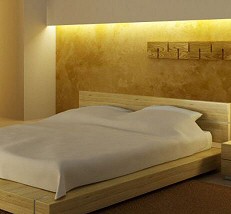
Try to place the LED Strips in such a way that the LED Strip and the light points themselves remain hidden. If you can see the light points, the beautiful effect of indirect lighting is immediately gone. Of course, there are also applications where it is desirable to leave the light points in plain sight. This depends a lot on the effect that you want to create!
What applications are there for LED Strips?
If you are creative, the applications are of course endless. Below you will find a few examples of popular uses for LED Strips.
Cove lighting
LED Strips are widely used here and the effect is great. LED Strip is placed hidden from sight in a cove, creating the beautiful effect of lighting from an invisible source. Because a LED Strip contains many light points per meter (60 to 120!) the light is evenly distributed and never interrupted like when TLs are used.
Kitchen lighting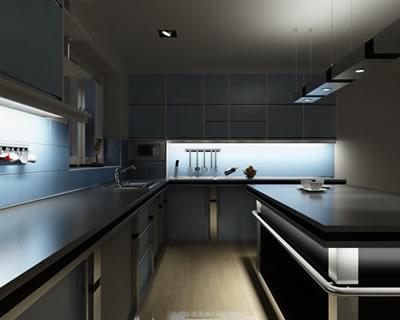
You can apply LED Strips in many places in a kitchen. For example as indirect lighting of the countertop or lighting in and under cabinets.
Aquarium lighting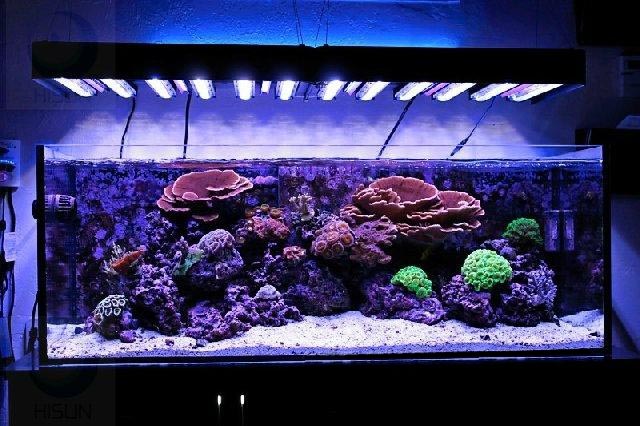
Usually, a combination of white, cool white, blue and red LED Strips is used in aquarium-lighting. Blue and cool white are very suitable for nighttime lighting and white is great for daytime lighting. Do make sure that you use waterproof LED Strips or LED bars!
If you want to light and aquarium, not only the aesthetics are important. Plant and animal life in the aquarium is also dependant on good lighting. So, if there are any doubts, please don't hesitate to contact us for advice on this subject.
Cabinet lighting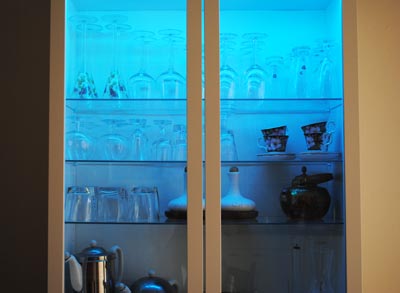
LED Strips are often ideal for use in cabinets where there is a "lighting-problem" because there is insufficient space to place TLs or halogen spots. A LED Strip fits in the smallest corners and behind the smallest shelves, so there is always a solution using LED Strips!
Lighting of glass surfaces, paintings, etc.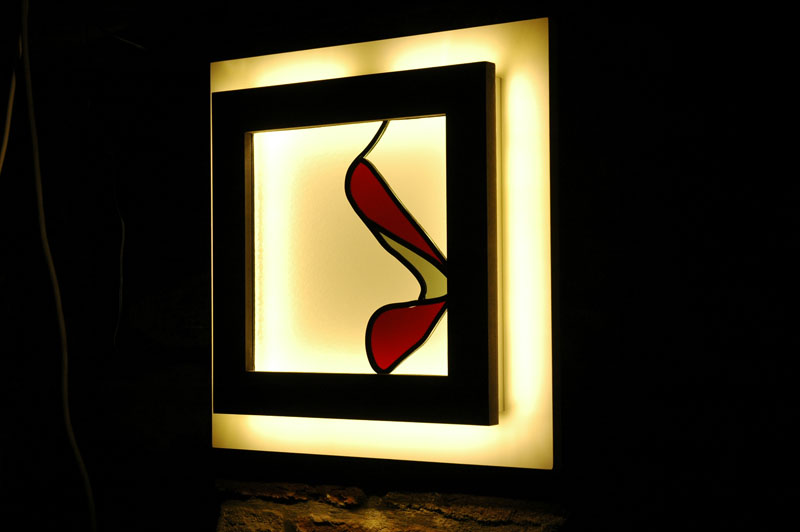
LED Strips , because of the even light distribution and the ease with which you can bend them around corners, are very popular for these kinds of applications.
Of course, there are many more applications for LED Strips. We are always very interested in the lighting-projects of our clients. So, do you have pictures of your project, or maybe you need some advice? Please don't hesitate to contact us at info [at] buyledstrip.com!
Is the LED Strip I want to use bright enough?
Bij elke LED Strip op onze website staan bij de specificaties het stroomverbruik en de lichtopbrengst per meter aangegeven, maar als deze cijfers je niets zeggen kun je de volgende vuistregel gebruiken:
You can find the specifications of each of the LED Strips on our website on the bottom of the description page of the respective LED Strip. Here, you will find the power consumption in Watts per meter and the luminous flux in lumen per meter. But, if these numbers do not make any sense to you, you can use the following rules of thumb:
Compare the LED Strip to a regular TL:
Power consumption LED Strip x 1.5 = Power consumption TL
Example: Say a LED Strip uses 9.8W/meter. One meter of this LED Strip is therefore equal to 9.8W x 1.5 = +/-15 Watts of TL.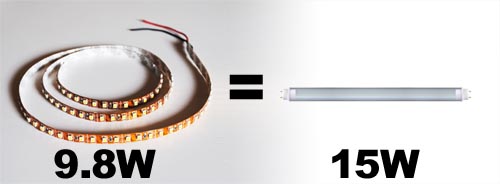
Compare the LED Strip to a halogen-spotlight:
Power consumption LED Strip x 7 = Power consumption halogen-spotlight
Example: A given LED Strip consumes 9.8W per meter. So, one meter of this LED Strip is equal to 9.8 x 7 = +/- 70 Watts of halogen lighting.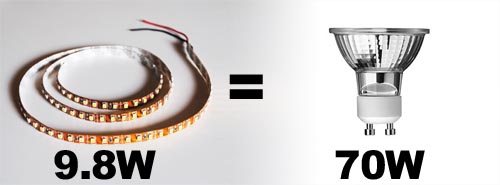
Is a LED Strip too bright? Then you can use a LED Dimmer. All the LED Strips on our website are dimmable.
How do I know the LED Strips you sell are of good quality?
A 2 year warranty applies to all our products. You can also change your mind after up to 30 days after your purchase. So if for whatever reason the LED Strips are not satisfactory, you can return them to us for a full refund. (Please note that the adhesive strip, if present, should be intact)
We have served over 5000 satisfied customers. If something does go wrong, we will do everything in our power to help you. Our clients evaluate us with an average grade of 9.3.![]()
(You can also see the reviews at the top-right of this page. They are in Dutch)
Should I choose RGB (multiple colors) or single color LED Strip?
There are roughly two types of LED Strips: LED Strips that can produce one fixed colour and LED Strips that can produce all possible colours. The latter are called "RGB". An LED on these LED Strips looks like this: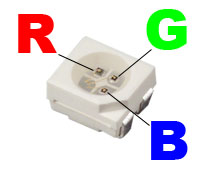
So, if we look closer, an RGB LED actually consists of 3 small LEDs: a red, green and blue one. By mixing these three colours in various ways all colours can be produced, including white. In combination with an RGB Controller all kinds of great lighting effects can be created. This makes that RGB LED Strips are a very popular product.
Still, there are reasons (besides de price) to choose single color LED Strips over RGB LED Strips.
The most imporant reason is that if you really want warm white light, a single color LED Strip with warm white LEDs produces a much more pleasant light than an RGB LED Strip. While an RGB LED Strip can produce any colour, the warm white light that such a strip can create is only an approximation. After all, an RGB LED only consists of three colours: a red, green and blue one! Real (warm) white light consists of a mixture of all possible colours, which an RGB LED simply can't produce. So, if you find it more important to have great warm white light than to have the possibility of multiple colours, we always suggest to choose warm white single color LED Strip.
Which products do I need?
Our LED Strips work on 12 Volts. A wall socket is 110-230 Volts. So, you cannot connect a LED Strip directly to the power outlet, and you will need a power supply. Of course, there are exceptions where you can connect a 12V LED Strip directly, for example in boats and cars where the battery already works on 12 Volts.
We have a number of complete LED Strip sets (non waterproof) on our website which include a suitable power supply. We suggest that you check these sets first to see if you can use one of them. If not, you need to order the products separately:
Single color LED Strip
To connect a LED Strip to 110-230V you need a power supply. A single color LED Strip does not need anything else to function. As you can see, you can find various power supplies on our website, ranging from 12 Watts to 250 Watts. Which one should you choose?
How to choose a power supply
1) Scroll to the bottom of the description page of the LED Strip that you want to use, and look under "details". In this example we will use LED Strip Warm White 60 LED/m.
2) Look at "Power: XX Watts per meter". For this LED Strip, you will find 4.8 Watts per meter.
3) Determine how many meters of LED Strip you need. Example: You want 9 meters of this LED Strip. The power consumption per meter is 4.8 Watts, so the total power consumption of 9 meters of this strip is 43.2 Watts.
4) Choose a power supply that can handle at least 43.2 Watts. In this case, a power supply of 12 Watts or 36 Watts is insufficient. In this case a Power supply 60 Watts is the right choice.
If you want to be able to change the brightness of your LED Strip, you can use a LED Dimmer. This dimmer is placed between the 12V Power source or power supply and the LED Strip. For the dimmer we also recommend that you look at the specifications first to find out what the maximum power for this LED Dimmer is. For example, if you look at this LED Dimmer, the maximum power you will find is 24 Watts. Don't connect more than 24 Watts of LED lighting to this dimmer! In the above example of 9 meters of LED Strip, with a power consumption of 43.2 Watts, you would need a larger dimmer, like this one, with a maximum power of 75 Watts.
Do you have technical questions on how to connect everything?
Please check our manual.
RGB LED Strip
To use an RGB LED Strip you always need an RGB Controller, even if you connect it directly to 12 volts. This is because the RGB Controller mixes the colors of the RGB LED Strip and makes it possible for you to set the color and light effects. An RGB Controller can also change the brightness. Like when choosing an LED Dimmer (see above), you need to make sure that you do not exceed the maximum power of the RGB Controller. If you look at this RGB Controller for example, you will find that the maximum power is 72 Watts. Other controllers have a maximum of 144 or 216 Watts.
To connect an RGB LED Strip to 110-230 Volts you will also need a power supply. Choosing the right power supply is done in the same way as with single color LED Strip (described a few paragraphs earlier).
It is possible to control very large amounts of LED Strip with one controller and one remote. To do this, you need to use one or more RGB Amplifiers. You can connect another 144 Watts of LED lighting to this amplifier. Connect an extra power supply (that can handle 144 Watts!) to the amplifier and route the output signal of the RGB Controller to the input of the amplifier. Then, connect the extra LED strip to the output of the amplifier. You can repeat this infinitely, so there is no limit to the amount of LED Strip that you can control with one controller.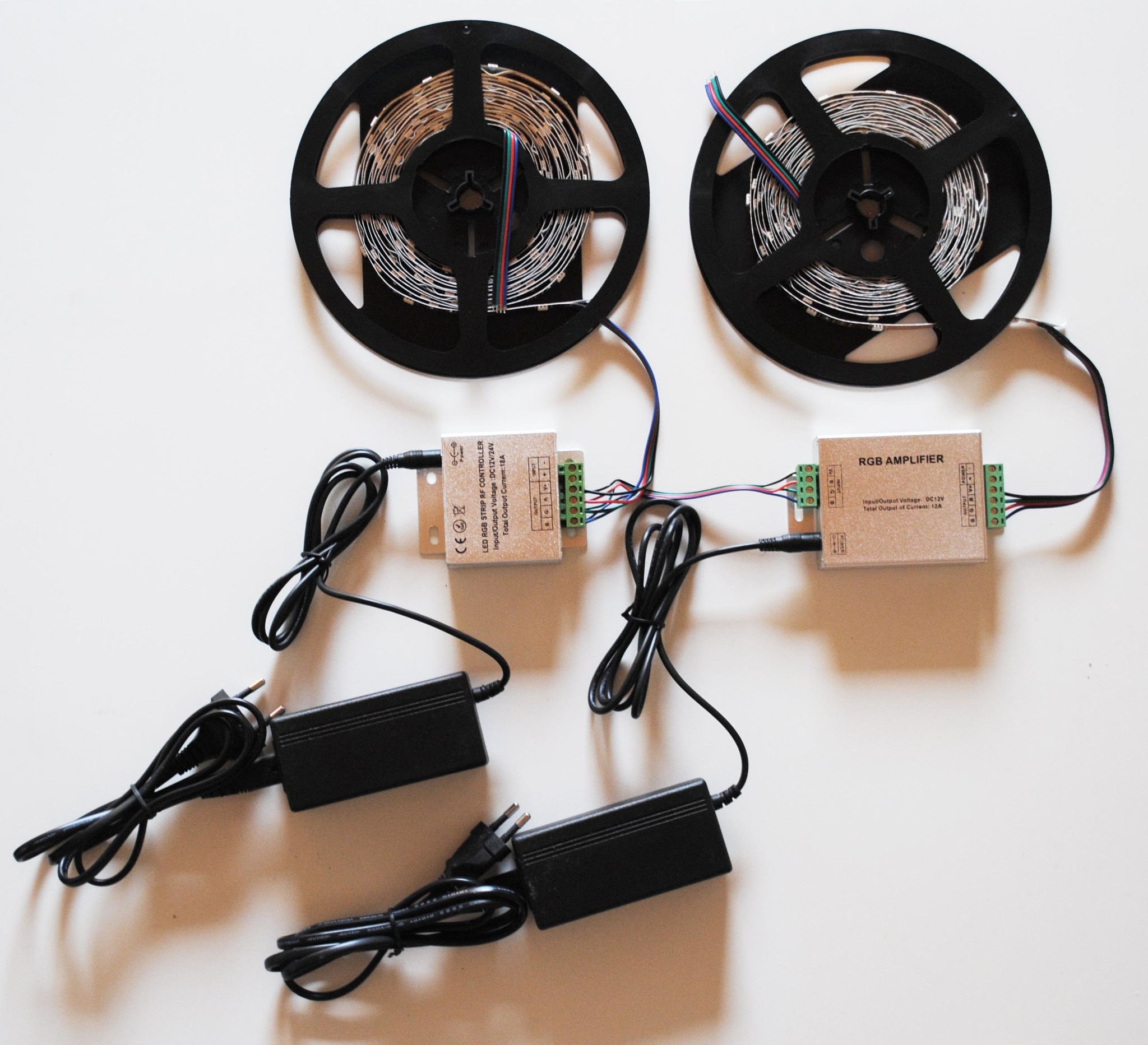
One RGB Controller with one RGB Amplifier and two power supplies
Do you have technical questions on how to connect everything?
Please check our manual.
Can't find your question?
Please contact us or use the live chat! (Bottom right)

